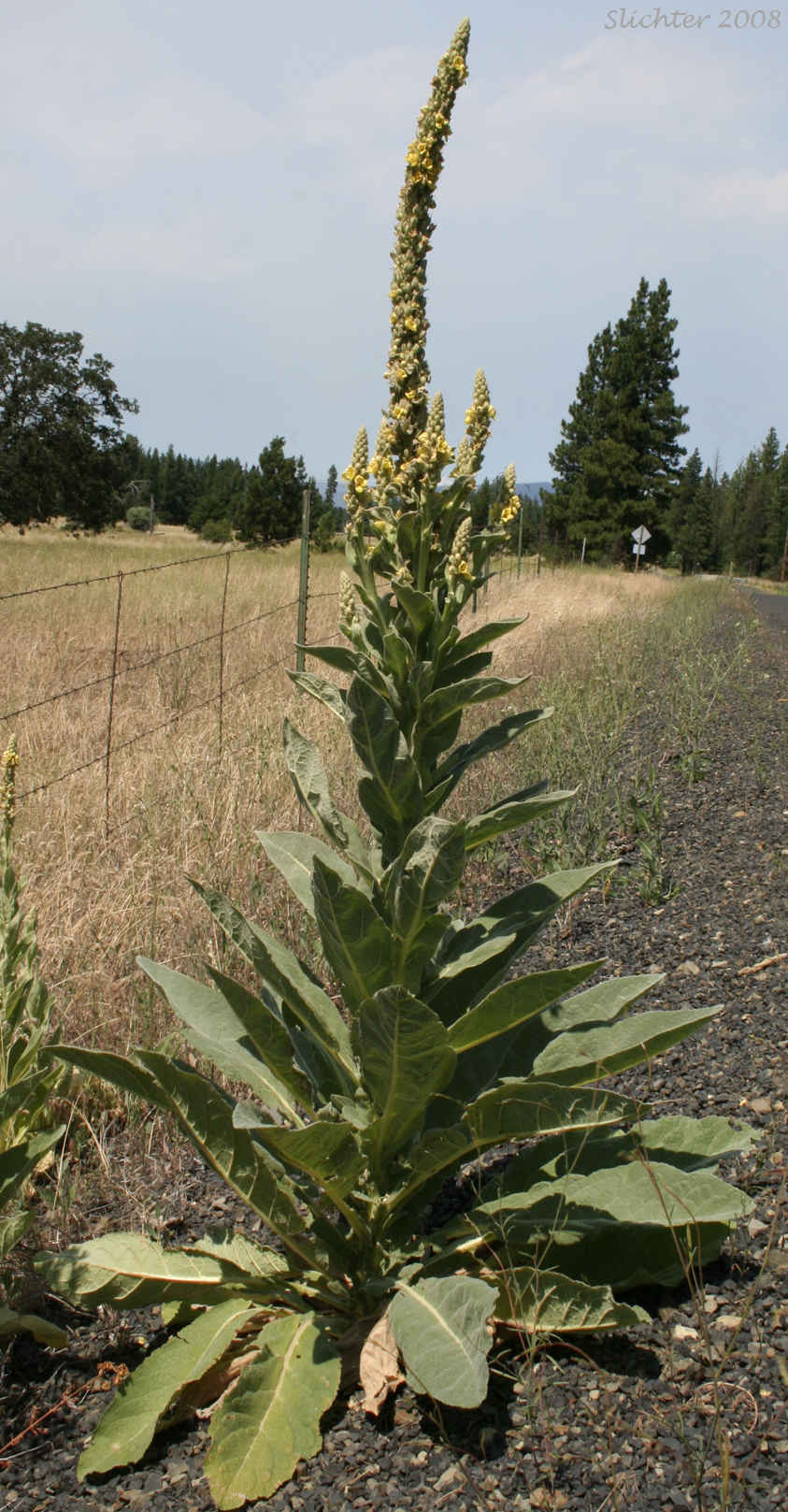
 Characteristics:
Characteristics:
Moth mullein is a biennial weed which produces a basal cluster of fuzzy leaves during its first year's growth and grows a single stem from 40-200 cm tall during the second season. The stems and leaves are densely covered with soft, long hairs. The basal leaves are light green and densely woolly.All leaves are alternate and overlap each other. The basal leaves are round-toothed or entire and broadly oblanceolate in shape. The individual basal leaves range from 10-40 cm long and 3-12 cm wide. The base of each leaf tapers gradually to a short petiole. The stem leaves are numerous and reduced in size upwards on the stem. The stem leaves become sessile and clasping on the upper stem. The stem is winged longitudinally as a result of the scasping bases of the stem leaves.
The inflorescence is a dense, elongate raceme of bright sulphur yellow (sometimes nearly white) flowers. The corolla is about 2 cm wide and consists of 5 broad, slightly irregular lobes with lower lobes slightly larger. The flowers are largely sessile. The plant produces large quantities of tiny seeds which are readily dispersed and germinate. This makes control difficult. Livestock will not eat the leaves due to their woolliness.Common mullein is a weedy species found in disturbed areas such as fields, roadsides, and waste places.
Common mullein is an introduced, weedy species from Eurasia which is now common in disturbed areas of North America.

